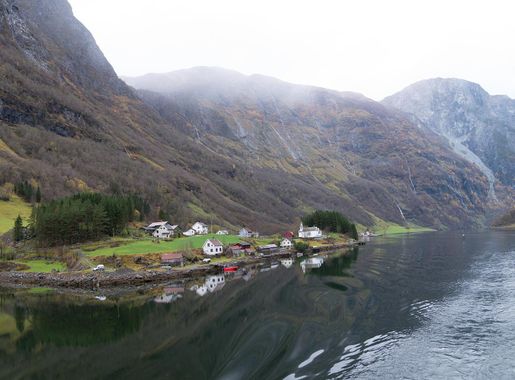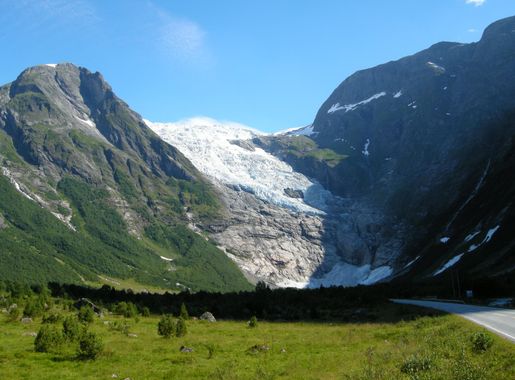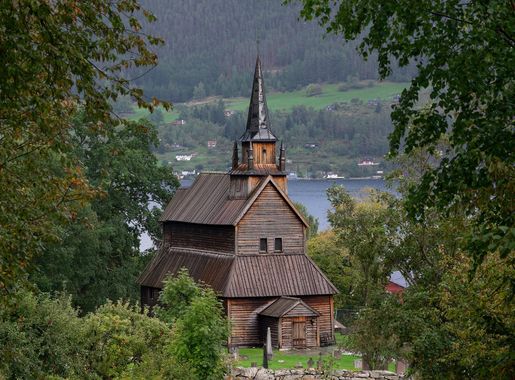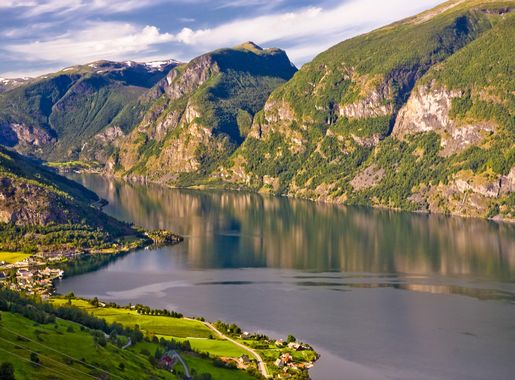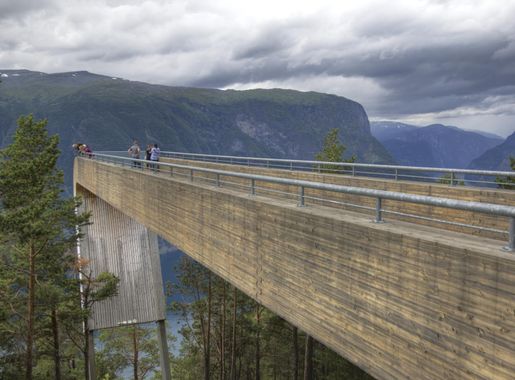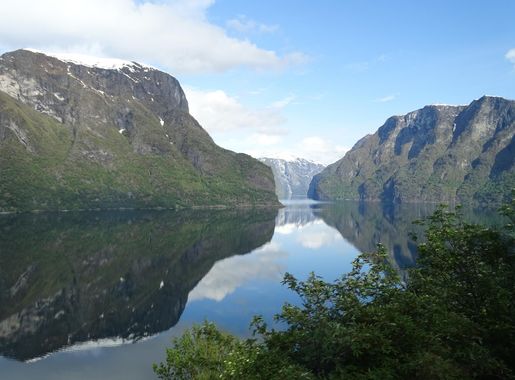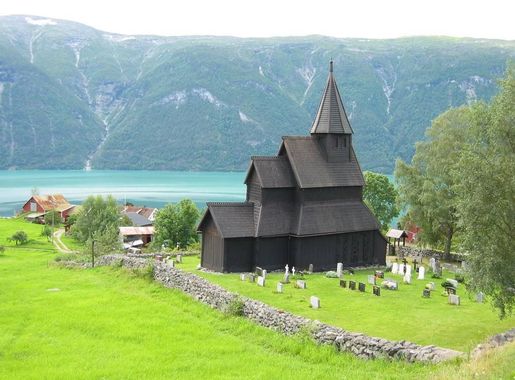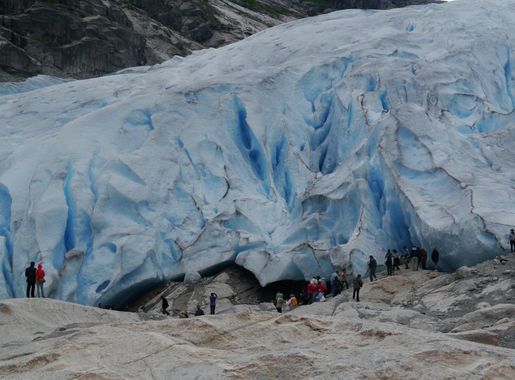
Sognefjord: Norway's Majestic Blue Jewel
Discover the breathtaking beauty of Sognefjord, Norway's longest and deepest fjord, offering stunning landscapes, outdoor adventures, and rich cultural heritage.
Sognefjord, often referred to as the 'King of Fjords,' is the longest and deepest fjord in Norway, stretching over 200 kilometers inland from the coast. This natural wonder is surrounded by towering mountains, lush valleys, and picturesque villages, making it a must-visit destination for nature lovers and adventure seekers alike. The fjord offers a variety of activities throughout the year. In the summer, visitors can enjoy boat cruises that showcase the stunning landscapes, hike the well-marked trails for breathtaking views, or explore charming villages like Balestrand and Flam. In winter, the region transforms into a snowy paradise, perfect for skiing, snowshoeing, and spotting the Northern Lights. Sognefjord is also home to numerous cultural and historical attractions. The ancient stave churches, such as the Urnes Stave Church, a UNESCO World Heritage Site, provide a glimpse into Norway's medieval past. The local museums and art galleries offer insights into the region's rich heritage and artistic traditions. Whether you're seeking thrilling outdoor activities, peaceful natural beauty, or a journey through history, Sognefjord has something for everyone. Its serene landscapes and welcoming communities ensure a memorable and enriching travel experience.
Local tips in Sognefjord
- Visit during the summer for the best hiking conditions and boat cruises.
- Book accommodations in advance, especially in popular villages like Flam and Balestrand.
- Don't miss the Urnes Stave Church, a UNESCO World Heritage Site.
- Consider renting a car for easier access to remote areas and flexibility in your itinerary.
- Try local delicacies such as fresh seafood and traditional Norwegian dishes.
- Pack layers and waterproof clothing, as weather can be unpredictable.
Sognefjord: Norway's Majestic Blue Jewel
Sognefjord, often referred to as the 'King of Fjords,' is the longest and deepest fjord in Norway, stretching over 200 kilometers inland from the coast. This natural wonder is surrounded by towering mountains, lush valleys, and picturesque villages, making it a must-visit destination for nature lovers and adventure seekers alike. The fjord offers a variety of activities throughout the year. In the summer, visitors can enjoy boat cruises that showcase the stunning landscapes, hike the well-marked trails for breathtaking views, or explore charming villages like Balestrand and Flam. In winter, the region transforms into a snowy paradise, perfect for skiing, snowshoeing, and spotting the Northern Lights. Sognefjord is also home to numerous cultural and historical attractions. The ancient stave churches, such as the Urnes Stave Church, a UNESCO World Heritage Site, provide a glimpse into Norway's medieval past. The local museums and art galleries offer insights into the region's rich heritage and artistic traditions. Whether you're seeking thrilling outdoor activities, peaceful natural beauty, or a journey through history, Sognefjord has something for everyone. Its serene landscapes and welcoming communities ensure a memorable and enriching travel experience.
When is the best time to go to Sognefjord?
Iconic landmarks you can’t miss
Flåmsbana
Discover the breathtaking scenic journey of Flåmsbana, the iconic railway through Norway’s stunning landscapes and majestic fjords.
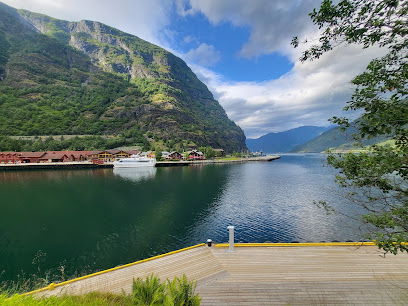
Stegastein viewpoint
Experience the breathtaking vistas of Aurlandsfjord from Stegastein Viewpoint, an architectural marvel in the heart of Norway's scenic landscapes.
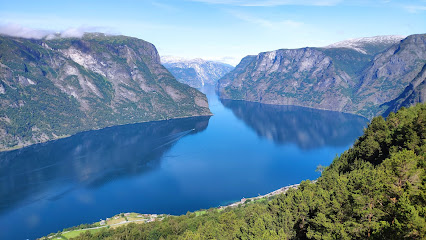
Kjosfossen Falls
Discover the breathtaking beauty of Kjosfossen Falls, one of Norway's most picturesque waterfalls surrounded by stunning landscapes.
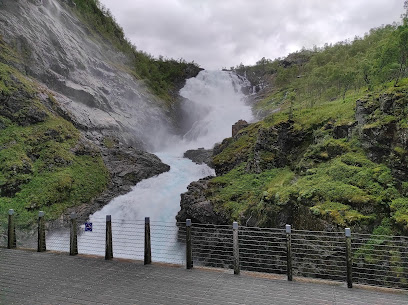
Stegastein- LOOKOUT
Discover the awe-inspiring views at Stegastein Lookout, a stunning architectural marvel overlooking the breathtaking Aurlandsfjord in Norway.
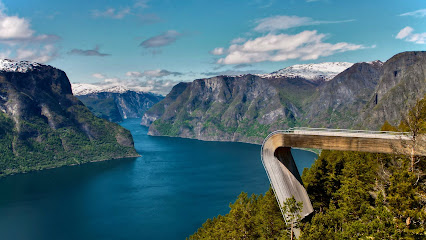
Flåm Church
Discover the serene beauty and historical significance of Flåm Church, a must-see tourist attraction in Norway's breathtaking landscape.
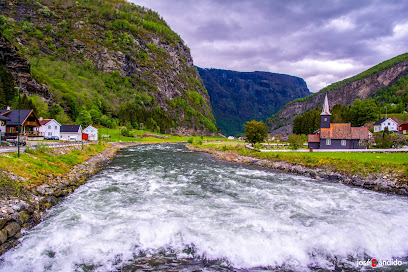
Breheimsenteret
Explore the stunning glacial landscapes and rich culture at Breheimsenteret, your gateway to Jostedalsbreen National Park.
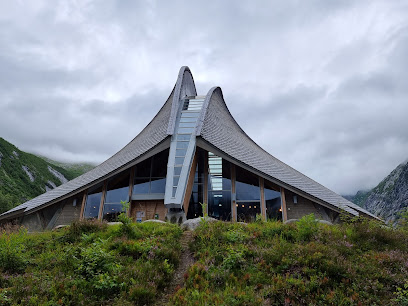
Njardarheimr
Explore the Viking Age at Njardarheimr in Gudvangen, a cultural center that offers immersive experiences and engaging activities for all ages.
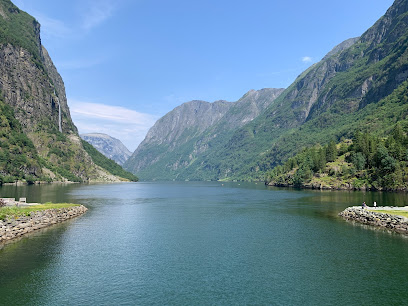
Bøyabreen Glacier
Explore the breathtaking beauty of Bøyabreen Glacier, a must-visit natural wonder in Norway, perfect for hiking, photography, and environmental awareness.
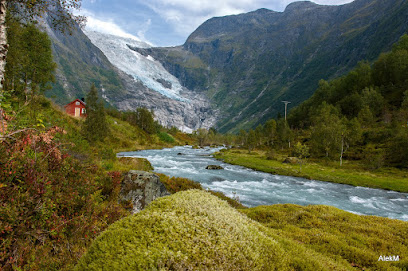
Balestrand fjord adventures
Discover the breathtaking beauty of Norway's fjords with Balestrand Fjord Adventures, offering unforgettable tours into nature's magnificent landscapes.

Sogn og Fjordane Kunstmuseum
Explore the rich cultural heritage of Norway at Sogn og Fjordane Kunstmuseum, a treasure trove of art in Førde, showcasing contemporary and historical masterpieces.
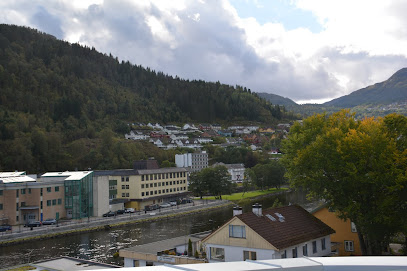
The Fjords
Discover breathtaking views and unforgettable experiences at The Fjords, Norway's premier cruise terminal, gateway to stunning fjord landscapes.
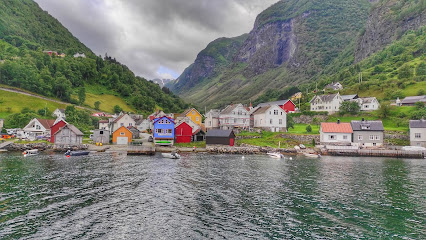
BALESTRAND FJORD ANGLING
Discover Balestrand Fjord Angling, where breathtaking landscapes and thrilling fishing adventures await in Norway's enchanting fjords.
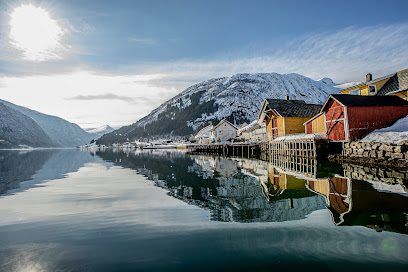
Blick auf den Sognefjord
Explore the breathtaking beauty of Sognefjord, Norway’s majestic fjord, where adventure and tranquility meet in a stunning natural landscape.
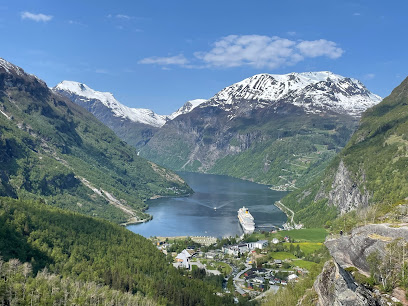
Visit Sognefjord AS
Explore the breathtaking Sognefjord region at Visit Sognefjord AS, your gateway to nature, culture, and unforgettable adventures in Norway.
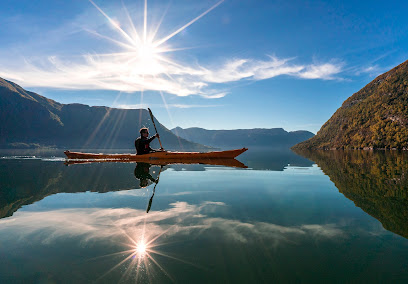
Sogndalsfjorden
Experience the breathtaking beauty of Sogndalsfjorden, a serene fjord in Norway, perfect for outdoor adventures and unforgettable views.

Unmissable attractions to see
Flåm Church
Experience the serene beauty and rich heritage of Flåm Church, a tranquil landmark nestled in Norway's breathtaking fjord landscape.

De Heibergske Samlinger - Sogn Folkemuseum
Discover the essence of Norwegian history and culture at De Heibergske Samlinger - Sogn Folkemuseum, a captivating open-air museum in Kaupanger.
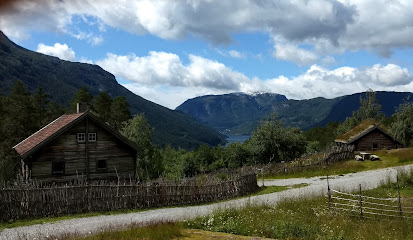
Hove steinkyrkje
Explore the enchanting Hove Steinkyrkje, a stunning medieval stone church in Vik i Sogn, showcasing Norway's rich architectural heritage.
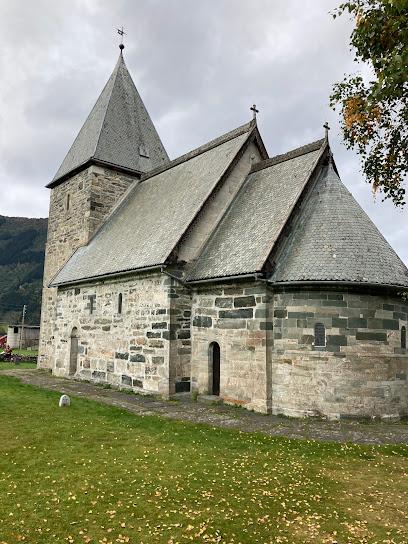
Sognefjord Akvarium
Explore the vibrant marine life of Norway at Sognefjord Akvarium, a family-friendly attraction in the stunning Balestrand region.
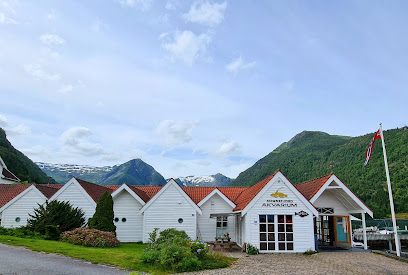
Kjelfossen
Experience the breathtaking beauty of Kjelfossen, a stunning waterfall in Gudvangen, surrounded by majestic fjords and lush landscapes.
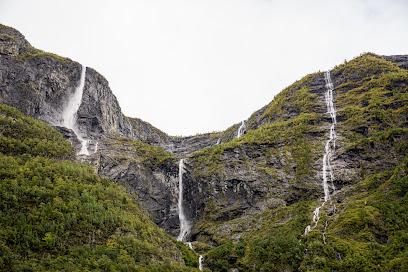
Steim farm visit
Discover the beauty of Norwegian farming at Steim Farm in Vik i Sogn, a delightful getaway for families and nature lovers seeking authentic experiences.
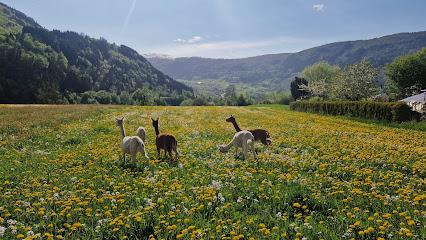
Viewpoint
Experience the breathtaking beauty of Norway's fjords and mountains at the Flåm Viewpoint, a must-visit tourist attraction for all nature lovers.
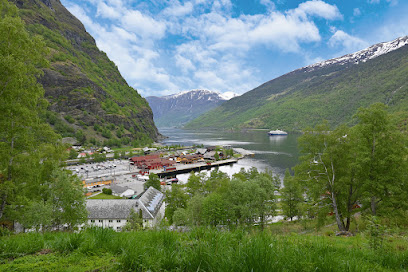
Kaupanger jump
Experience the thrill of Kaupanger Jump, a stunning tourist attraction in Norway offering breathtaking views and exhilarating water adventures.
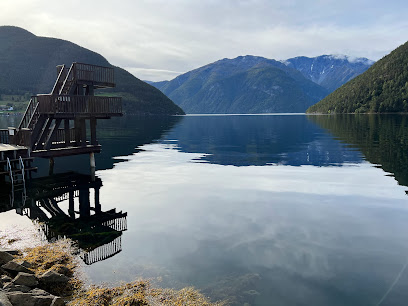
Fysseneset waterfall
Experience the breathtaking Fysseneset Waterfall in Fresvik, Norway—where nature's beauty meets serene adventure amidst stunning landscapes.
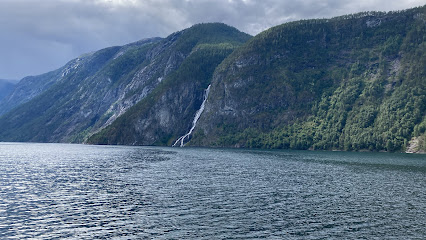
Kvitenjuk
Experience the breathtaking beauty of Kvitenjuk in Vangsnes, Norway - a serene tourist attraction perfect for nature lovers and adventurers alike.
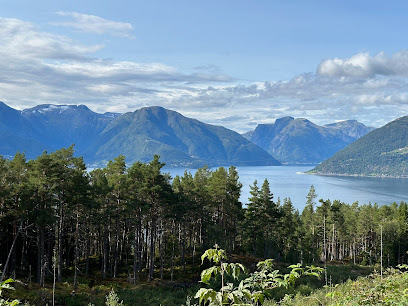
Viewpoint Arnafjord and Sognefjord
Experience the stunning beauty of Norway at the Viewpoint Arnafjord and Sognefjord, where breathtaking landscapes and tranquility await.
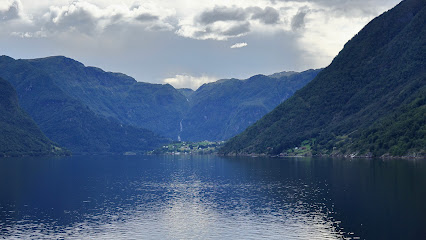
Fjord Viewpoint
Discover the breathtaking Fjord Viewpoint in Flåm, Norway, where stunning vistas and serene landscapes await every traveler.
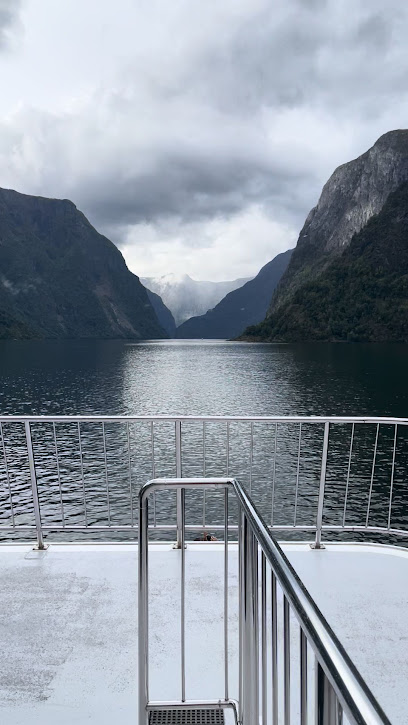
Retirement Home Public Beach
Discover the serene beauty of Retirement Home Public Beach in Balestrand, a tranquil escape surrounded by stunning fjord views.
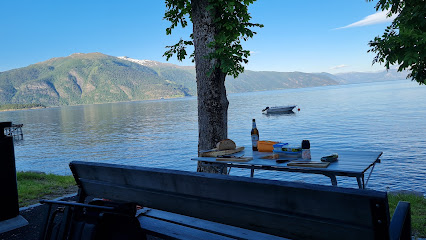
foss på elven (Cascadă)
Experience the serene beauty of Foss på Elven, a stunning waterfall in Sogndalsfjora, Norway, ideal for relaxation and nature exploration.
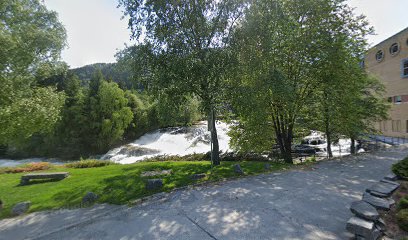
Essential places to dine
Ægir microbrewery
Discover Ægir Microbrewery: A unique blend of craft beer and traditional Norwegian cuisine set against breathtaking fjord views.
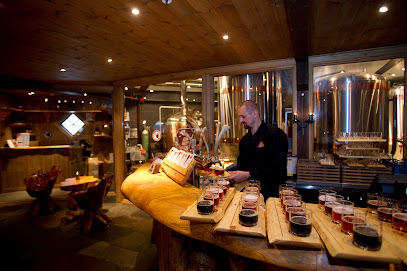
Flåmsbrygga Hotel
Experience authentic Norwegian cuisine at Flåmsbrygga Hotel while surrounded by breathtaking fjord views in beautiful Flåm.

Fretheim Hotel
Experience Norwegian hospitality at Fretheim Hotel in Flåm – where scenic beauty meets comfort.
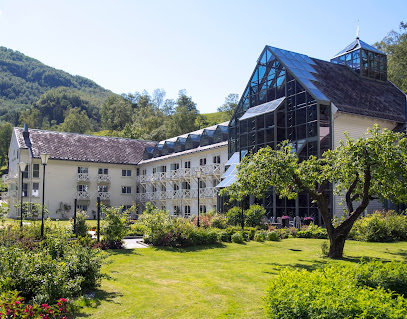
Kviknes Hotel
Discover timeless elegance at Kviknes Hotel in Balestrand – where stunning fjord views meet rich history and exceptional dining.
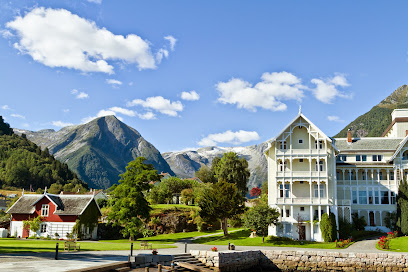
Restauranthuset Malin, Sogndal
Experience authentic Norwegian cuisine at Restauranthuset Malin in Sogndal – where local flavors meet warm hospitality.
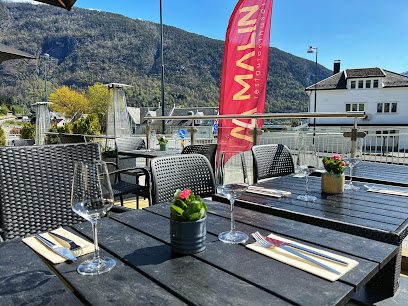
Vågal Burger and Gin
Discover culinary excellence at Vågal Burger and Gin in Sogndal - home to gourmet burgers and an exquisite gin selection.
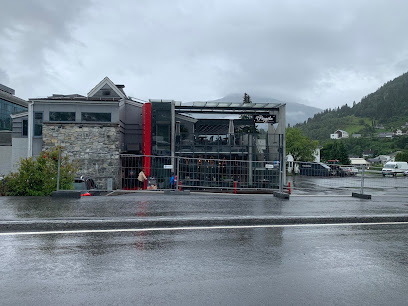
La Pergola
Experience authentic Italian cuisine at La Pergola in Sogndal – where taste meets tradition amidst stunning Norwegian landscapes.
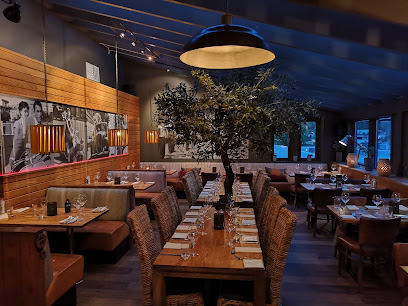
Ciderhuset – cidersmaking/restaurant/butikk
Experience the best of Norway's cider culture at Ciderhuset in Balestrand – where fine dining meets artisanal craftsmanship.
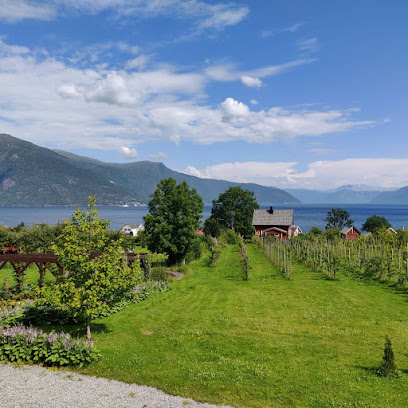
Lavik Fjord Hotel
Discover tranquility at Lavik Fjord Hotel—your gateway to explore Norway's majestic landscapes and enjoy local Norwegian hospitality.
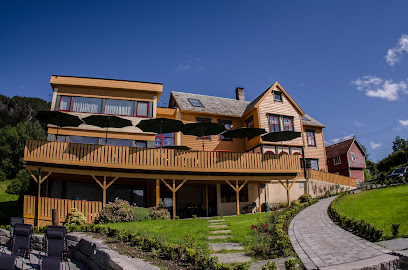
Nes Gard
Discover the flavors and beauty of Norway at Nes Gard, where delicious cuisine meets breathtaking landscapes in Høyheimsvik.

Lustraporten AS
Discover authentic Norwegian flavors at Lustraporten AS in Hafslo – where culinary tradition meets stunning natural beauty.
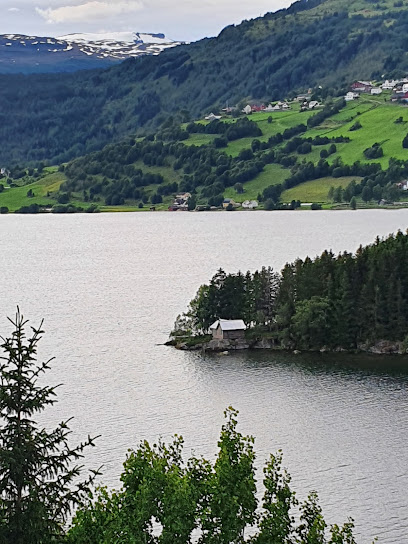
Gekkens Restaurant & Café AS
Experience authentic Norwegian cuisine at Gekkens Restaurant & Café in Balestrand, where local flavors meet stunning fjord views.
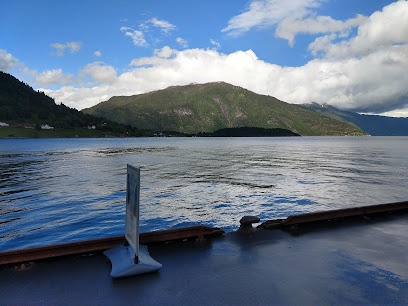
Vangsgaarden GastroPub
Savor authentic Norwegian cuisine at Vangsgaarden GastroPub, where local flavors meet cozy ambiance in scenic Aurland.
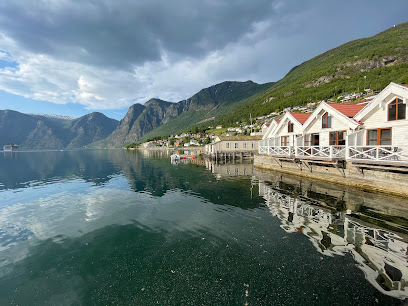
Hotel Sognefjord
Experience exquisite dining at Hotel Sognefjord in Leirvik - where local flavors meet breathtaking fjord views.

Flåm Sjømat and Vilt Suwannaprom
Experience fresh seafood delights at Flåm Sjømat and Vilt Suwannaprom in Norway's scenic village of Flåm.
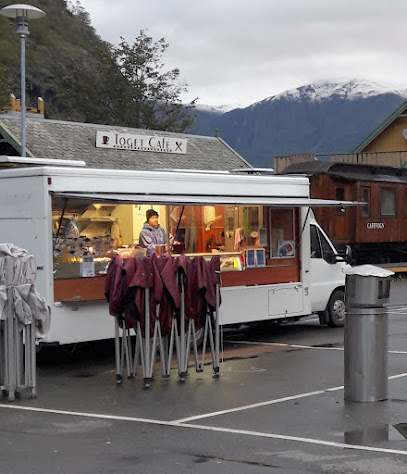
Markets, malls and hidden boutiques
Mall of Norway
Explore the Mall of Norway for a unique shopping experience featuring local clothing brands, souvenirs, and sporting goods in the heart of Flåm.
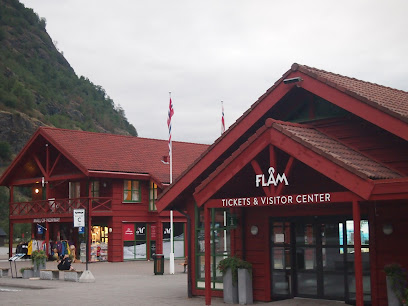
Sports Outlet Sogndal
Explore Sogndalsfjøra's finest sports goods destination, offering top-quality gear for all your athletic adventures.
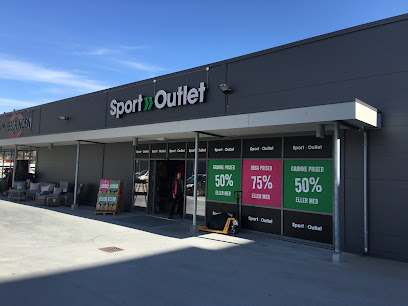
Europris Sogndal
Explore Europris Sogndal for unbeatable deals on groceries, home goods, and unique local products in the heart of Kaupanger.

Ortnevik Nærbutikk AS
Discover the charm of Ortnevik Nærbutikk AS, a cozy grocery store in Bjordal offering local products and a warm community atmosphere.
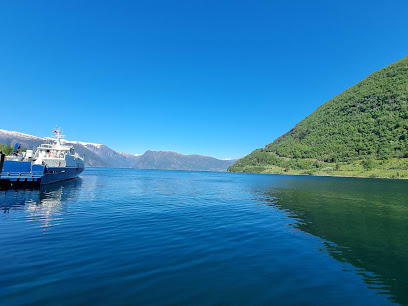
JYSK Sogndal
Explore JYSK Sogndal: Your destination for quality furniture, bedding, and outdoor essentials in stunning Sogndalsfjøra, Norway.
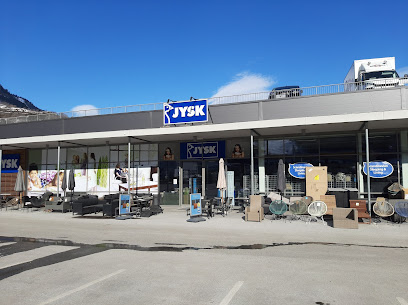
H&M
Discover stylish and affordable fashion for everyone at H&M in Sogndalsfjøra, offering a wide range of clothing and accessories in a vibrant shopping atmosphere.
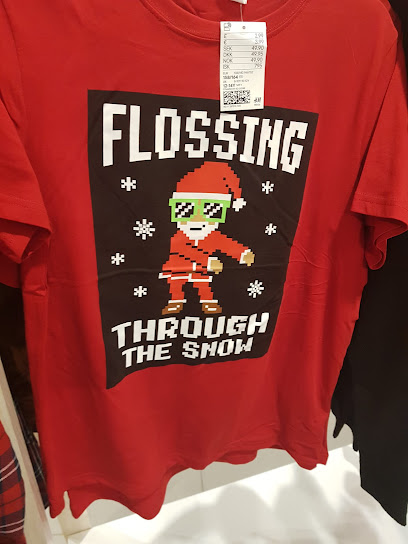
Fjorden Nærbutikk AS
Explore local flavors and essential supplies at Fjorden Nærbutikk AS, a charming grocery store in Vik i Sogn, perfect for your fjord adventures.
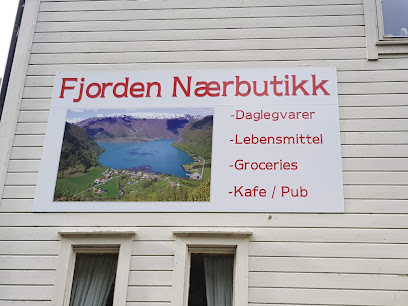
Abby Boutique
Discover unique women's fashion at Abby Boutique in Balestrand, Norway—a delightful shopping experience amidst stunning landscapes.
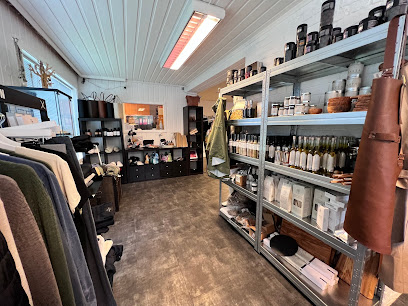
Flåm Store
Explore Flåm Store for unique souvenirs and local crafts in the heart of Norway's stunning fjord landscape.
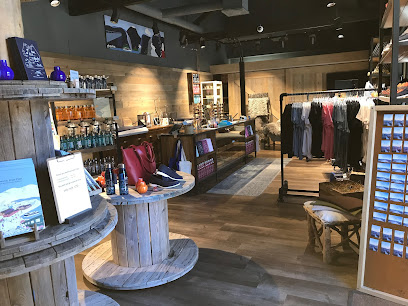
LIVSLYST
Explore the stylish offerings at LIVSLYST, a premier clothing store in Sogndal, blending modern fashion with Scandinavian charm.
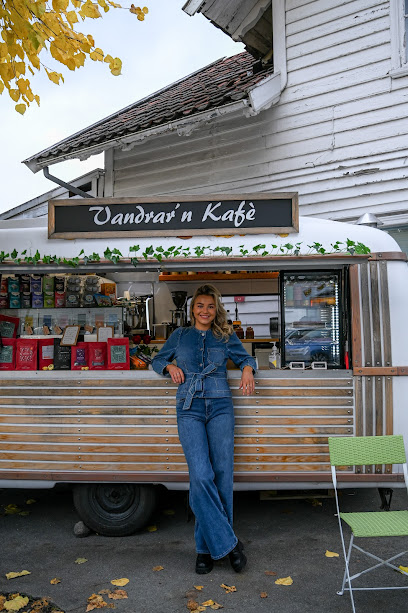
Sy og Strikkebui Oddveig Alpen
Explore the charming Sy og Strikkebui Oddveig Alpen in Sogndal, Norway, the ultimate destination for knitting and sewing enthusiasts.
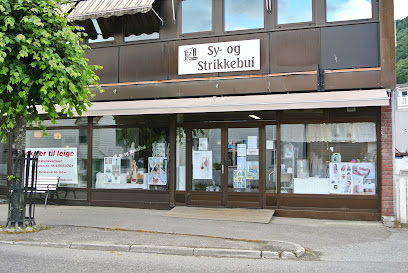
Assorti Sogndal
Discover the flavors of Norway at Assorti Sogndal, your go-to supermarket for fresh produce, local specialties, and international delights.
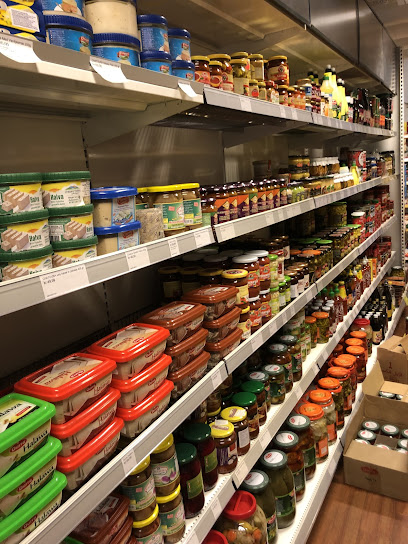
NORMAL Sogndal, AMFI Sogningen
Explore affordable fashion and essentials at NORMAL Sogndal, the charming boutique in AMFI Sogningen, Sogndal, Norway.
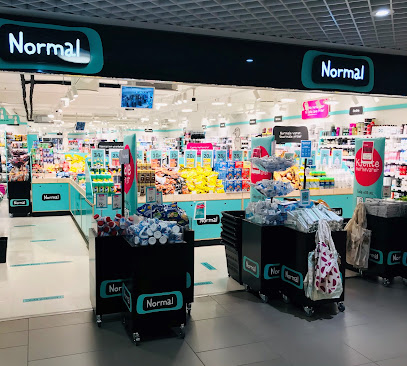
SJØKANTEN - SOGNDAL
Discover Sjøkanten - Sogndal, where local charm meets an extensive shopping experience in the heart of Sogndalsfjøra.
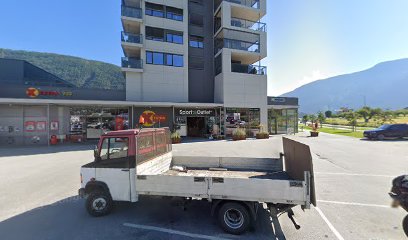
CEMA
Discover the enchanting world of handcrafted candles at CEMA in Sogndalsfjøra, where every scent tells a story and every candle is a piece of art.

Essential bars & hidden hideouts
Ægir microbrewery
Discover the authentic flavors of Norway at Ægir Microbrewery in Flåm—where craft beer meets Nordic cuisine in a stunning fjord setting.
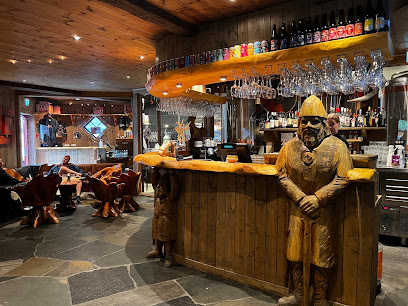
Vågal Burger and Gin
Experience gourmet burgers and an exquisite gin selection at Vågal Burger and Gin, a must-visit dining spot in Sogndal, Norway.
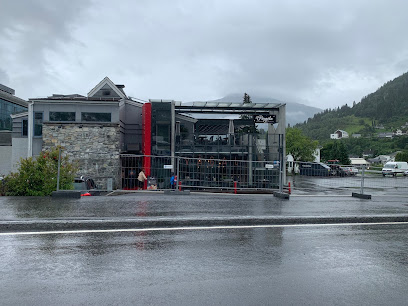
Dampskipskaien Cafe , Bar
Discover the perfect blend of cozy atmosphere, local flavors, and stunning fjord views at Dampskipskaien Cafe & Bar in Sogndalsfjøra.
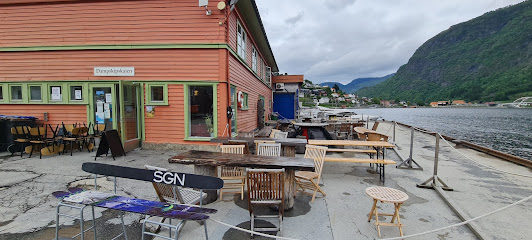
Gekkens Restaurant & Café AS
Experience the best of Norwegian cuisine at Gekkens Restaurant & Café in Balestrand, where local flavors meet stunning views for an unforgettable dining experience.
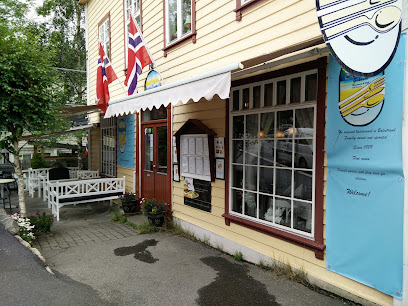
Vangsgaarden GastroPub
Discover the vibrant tastes of Norway at Vangsgaarden GastroPub in Aurland—where local ingredients meet breathtaking views.
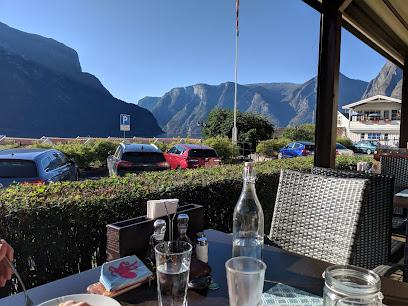
Sogndal Fjell- og fjordsportsenter
Discover the perfect blend of relaxation and adventure at Sogndal Fjell- og Fjordsportsenter, where stunning views meet a vibrant bar atmosphere.
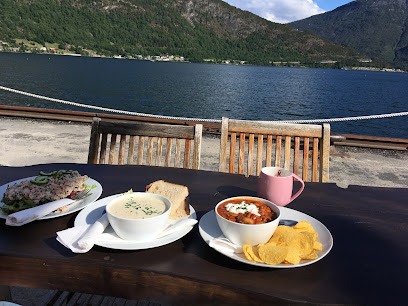
Studenthuset Meieriet
Discover Studenthuset Meieriet, a lively pub and café in Sogndal where music, community, and delicious food come together for an unforgettable experience.

Pearl by Harbor at Peters Plass
Experience exquisite Norwegian cuisine with breathtaking fjord views at Pearl by Harbor in Balestrand.
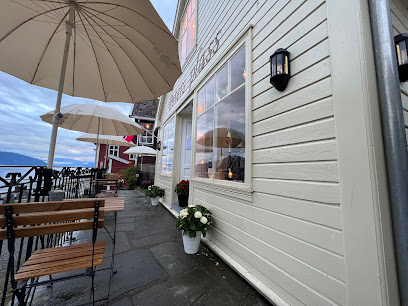
Postaabneriet pub & cafe AS
Discover the lively Postaabneriet Pub & Cafe in Borgund, where local culture meets delicious food and drink in a cozy atmosphere.
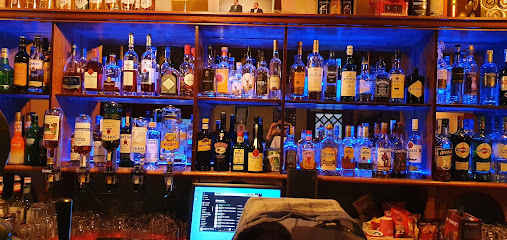
Balholm Bar og Bistro
Experience authentic Norwegian cuisine with breathtaking fjord views at Balholm Bar og Bistro in Balestrand, a must-visit for food lovers.
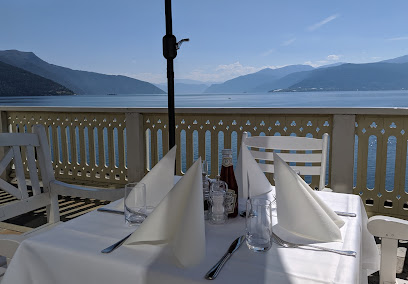
Fjøra Pub
Experience the heart of Sogndal at Fjøra Pub, where local charm meets a vibrant atmosphere for an unforgettable night out.
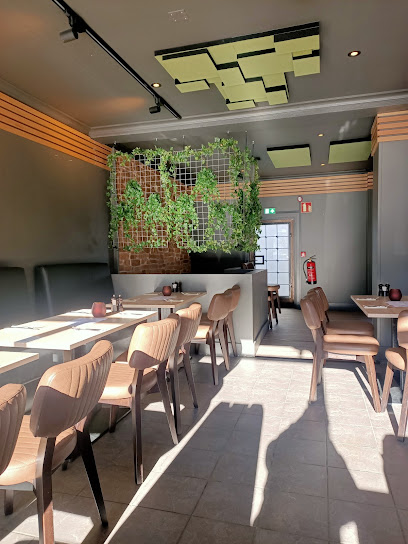
Kverna Waterfall Brewery AS
Experience the best of local craft beer and stunning natural beauty at Kverna Waterfall Brewery AS in Vadheim, Norway.
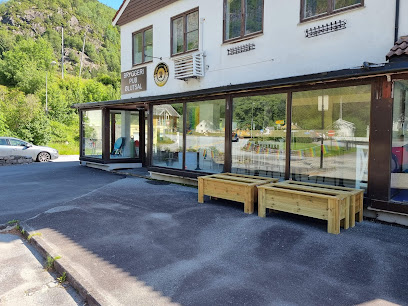
Mama Mia
Discover the culinary delights of Mama Mia in Sogndal, where authentic Italian cuisine meets Norwegian charm for an unforgettable dining experience.
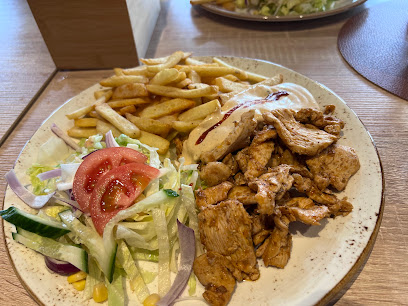
Dragsvik Restaurant
Experience the taste of Norway with exquisite dishes and stunning views at Dragsvik Restaurant in Balestrand.
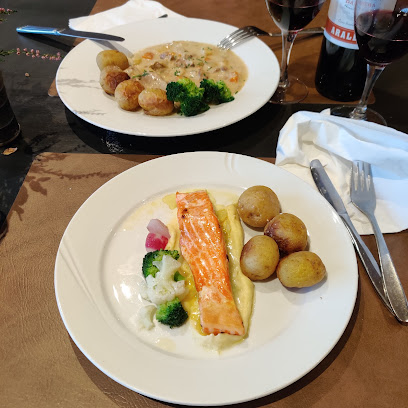
Nortun Ungdomshus
Discover the lively atmosphere at Nortun Ungdomshus in Slinde, a perfect blend of local culture, community events, and a welcoming pub experience.
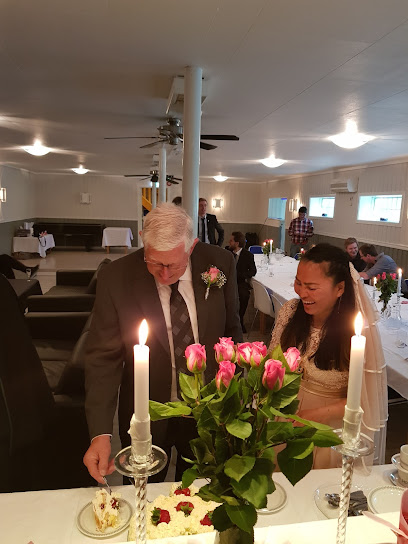
Local Phrases about Sognefjord
-
- HelloHallo
[ha-lo] - GoodbyeHa det bra
[ha de bra] - YesJa
[ya] - NoNei
[nay] - Please/You're welcomeVær så god
[ver sa go] - Thank youTakk
[tahk] - Excuse me/SorryUnnskyld
[oon-skyld] - How are you?Hvordan har du det?
[vor-dan har doo deh] - Fine. And you?Bra. Og du?
[bra oh doo] - Do you speak English?Snakker du engelsk?
[snak-ker doo eng-elsk] - I don't understandJeg forstår ikke
[yay for-stor eek-keh]
- HelloHallo
-
- I'd like to see the menu, pleaseJeg vil gjerne se menyen, takk
[yay vil yer-neh seh meh-nyen tahk] - I don't eat meatJeg spiser ikke kjøtt
[yay spee-ser ee-keh shøt] - Cheers!Skål!
[skohl] - I would like to pay, pleaseJeg vil gjerne betale, takk
[yay vil yer-neh beh-tah-leh tahk]
- I'd like to see the menu, pleaseJeg vil gjerne se menyen, takk
-
- Help!Hjelp!
[yelp] - Go away!Gå bort!
[goh bort] - Call the Police!Ring politiet!
[ring po-lee-tee-et] - Call a doctor!Ring en lege!
[ring en lay-geh] - I'm lostJeg har gått meg vill
[yay har goht may vill] - I'm illJeg er syk
[yay air seek]
- Help!Hjelp!
-
- I'd like to buy...Jeg vil kjøpe...
[yay vil shø-peh] - I'm just lookingJeg ser bare
[yay sair bah-reh] - How much is it?Hvor mye koster det?
[vor my-eh kohs-ter deh] - That's too expensiveDet er for dyrt
[deh air for deert] - Can you lower the price?Kan du senke prisen?
[kan doo sen-keh pree-sen]
- I'd like to buy...Jeg vil kjøpe...
-
- What time is it?Hva er klokka?
[va air klok-ka] - It's one o'clockKlokka er ett
[klok-ka air ett] - Half past (10)Halv ti
[halv tee] - MorningMorgen
[mor-gen] - AfternoonEttermiddag
[et-ter-mee-dag] - EveningKveld
[kvehld] - YesterdayI går
[ee gor] - TodayI dag
[ee dahg] - TomorrowI morgen
[ee mor-gen] - 1En
[en] - 2To
[too] - 3Tre
[treh] - 4Fire
[feer-eh] - 5Fem
[fem] - 6Seks
[seks] - 7Syv
[syv] - 8Åtte
[oh-teh] - 9Ni
[nee] - 10Ti
[tee]
- What time is it?Hva er klokka?
-
- Where's a/the...?Hvor er en/et...?
[vor air en/et] - What's the address?Hva er adressen?
[va air ad-dres-sen] - Can you show me (on the map)?Kan du vise meg (på kartet)?
[kan doo vee-seh may (poh kahr-teh)] - When's the next (bus)?Når går neste (buss)?
[nahr gor nehs-teh (boos)] - A ticket (to ....)En billett (til ....)
[en bee-leht (teel ....)]
- Where's a/the...?Hvor er en/et...?
History of Sognefjord
-
During the Viking Age, Sognefjord was a significant hub for Norse warriors. The fjord's strategic location provided a natural fortress and a launching point for voyages. Archaeological finds, such as burial mounds and rune stones, indicate the presence of Viking settlements. The legendary warrior-chief, King Harald Fairhair, is believed to have used Sognefjord as a base during his quest to unify Norway.
-
In the Middle Ages, Sognefjord became an essential trade route. The Hanseatic League, a powerful commercial and defensive confederation of merchant guilds in Northwestern and Central Europe, established trade links with the fjord. Goods such as fish, timber, and fur were traded extensively, boosting the local economy and bringing a mix of cultural influences to the region.
-
The Black Death reached Norway in 1349 and had a devastating impact on the population around Sognefjord. Many of the small villages and settlements were decimated, and the region faced a long period of economic and social hardship. Historical records from the period describe how entire communities were wiped out, leaving behind abandoned farms and churches.
-
In the 17th and 18th centuries, large estates began to dominate the landscape around Sognefjord. Prominent families, such as the Heibergs and the Mundals, acquired vast tracts of land and built grand manor houses. These estates became centers of agricultural innovation, social life, and local governance. The architecture and layout of these estates reflect the wealth and influence of their owners.
-
The 19th century brought industrialization to Sognefjord, with the development of steamships and improved infrastructure. This period also marked the beginning of tourism in the region. European nobility and wealthy travelers were drawn to the breathtaking scenery, leading to the construction of hotels and the establishment of regular passenger routes. The famous Norwegian painter Johan Christian Dahl depicted the fjord in his works, further boosting its allure.
-
During World War II, Sognefjord was occupied by German forces. The fjord's strategic importance meant it was heavily fortified, and several battles occurred in the region. The resistance movement was active in Sognefjord, conducting sabotage operations and aiding Allied forces. The war left a lasting mark on the local community, with numerous memorials and museums dedicated to this turbulent period.
-
Today, Sognefjord is a vibrant blend of history and modernity. Efforts to preserve historical sites and cultural traditions are coupled with a thriving tourism industry. Visitors can explore medieval stave churches, Viking relics, and the picturesque villages that dot the fjord. The region is also a gateway to outdoor activities, such as hiking, kayaking, and glacier tours, making it a year-round destination for adventurers and history enthusiasts alike.
Sognefjord Essentials
-
Sognefjord is located in the western part of Norway, and the nearest international airport is Bergen Airport, Flesland (BGO), approximately 200 kilometers away. From Bergen, you can take a scenic train ride to Myrdal and then transfer to the famous Flåm Railway, which takes you directly to Flåm, located at the innermost part of the Aurlandsfjord, a branch of the Sognefjord. Alternatively, you can rent a car and drive along the E16 highway, or take a bus or boat service that connects Bergen to various locations along the Sognefjord.
-
Getting around Sognefjord is facilitated by a combination of ferries, buses, and trains. The Flåm Railway is a must-try for its spectacular views. Local buses connect small towns and villages, and car rentals are also available for more flexibility. Fjord cruises and ferries are popular for navigating the fjords themselves, offering a unique perspective of the stunning landscape. Bicycles can be rented in some locations for short trips and scenic rides.
-
The official currency in Norway is the Norwegian Krone (NOK). Credit cards are widely accepted in hotels, restaurants, and shops, but it is advisable to carry some cash, especially when visiting more remote areas. ATMs are available in larger towns along the fjord. Mobile payment solutions like Vipps are also commonly used by locals and might be accepted in some establishments.
-
Sognefjord is generally a very safe destination for tourists. Crime rates are low, and violent crime is rare. Standard precautions apply: keep your belongings secure, especially in crowded areas. There are no specific high-crime areas targeting tourists, but it is always wise to stay vigilant and aware of your surroundings, especially when hiking or exploring remote areas.
-
In case of emergency, dial 113 for medical emergencies, 110 for fire, and 112 for police. Medical facilities are available in larger towns such as Sogndal, but smaller villages may have limited services. It is recommended to have travel insurance that covers medical emergencies. Pharmacies are available in most towns, where you can purchase over-the-counter medications.
-
Fashion: Do dress in layers and bring waterproof clothing, as weather can be unpredictable. Avoid wearing overly casual or revealing clothing in upscale restaurants. Religion: Do respect local customs and traditions. Although Norway is largely secular, some areas may have historical churches where modest dress is appreciated. Public Transport: Do be respectful and offer your seat to elderly passengers. Don't eat or drink on public transport. Greetings: Do greet people with a smile and a handshake. Norwegians value personal space, so avoid hugging unless you know someone well. Eating & Drinking: Do try local delicacies like smoked salmon and brown cheese. Don't refuse hospitality, as it is considered impolite.
-
To experience Sognefjord like a local, visit the local markets and try fresh seafood and other regional specialties. Engage with locals, who are often friendly and willing to share stories about the area's history and culture. Don't miss the opportunity to hike some of the famous trails, such as the Aurlandsdalen Valley or the Nærøyfjord, which is a UNESCO World Heritage Site. Consider staying in a traditional Norwegian cabin for an authentic experience.
Trending Landmarks in Sognefjord
Nearby Cities to Sognefjord
-
Things To Do in Ålesund
-
Things To Do in Molde
-
Things To Do in Stavanger
-
Things To Do in Oslo
-
Things To Do in Trondheim
-
Things To Do in Fredrikstad
-
Things To Do in Kristiansand
-
Things To Do in Karlstad
-
Things To Do in Skagen
-
Things To Do in Frederikshavn
-
Things To Do in Östersund
-
Things To Do in Gothenburg
-
Things To Do in Aalborg
-
Things To Do in Örebro
-
Things To Do in Viborg

